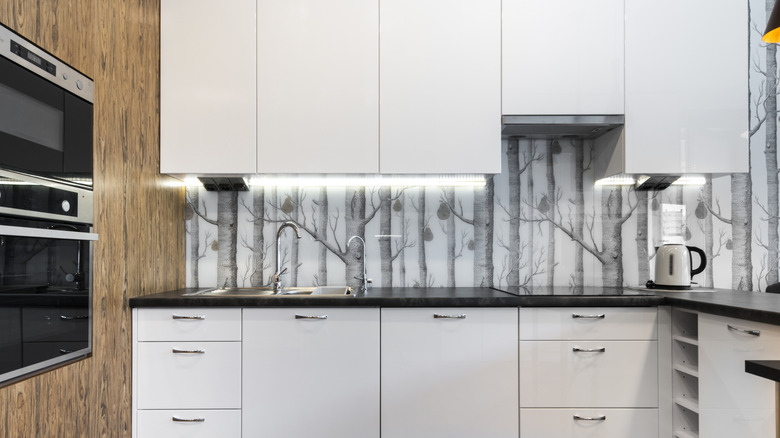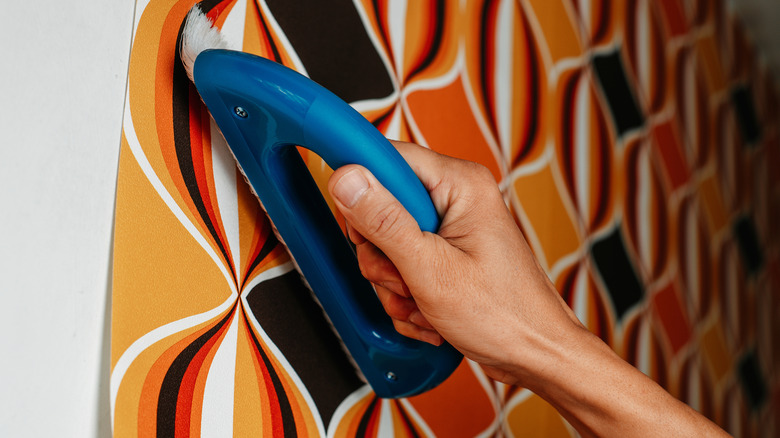Mistakes Everyone Makes When Using Wallpaper As Backsplash
Besides being one of the most innovative ways to use wallpaper in any room, adding a wallpaper backsplash in your kitchen or bathroom can be a stylish and cost-effective way to bring personality and flair to your space. However, there are a few common mistakes that can lead to disappointing results, wasted time, and additional expenses. By avoiding these pitfalls, you can achieve a beautiful and long-lasting wallpaper backsplash that enhances your space. The main mistakes people often make when using wallpaper as a backsplash include choosing the wrong wallpaper for the area, inadequate wall preparation, and incorrect application techniques.
Not all wallpapers are suitable for high-moisture and high-traffic areas like kitchens and bathrooms. Traditional paper-based wallpapers can absorb moisture, leading to peeling and staining over time. Instead, it's essential to select a wallpaper specifically designed for these environments, such as vinyl or washable wallpapers, which are more durable, moisture-resistant, and easier to clean, making them ideal for backsplash applications. However, vinyl shouldn't be used in hot areas, such as behind a stove, as it can be damaged by the heat. Also, consider the adhesive properties of the wallpaper. Some wallpapers come with pre-applied adhesive, while others require a separate paste. Stick-on wallpapers can be convenient, but they may not offer the same level of durability as those that require manual pasting. Choosing the right wallpaper for your space can save you from the frustration of having to replace it due to damage or wear.
Preparation and application techniques to ensure a beautiful backsplash
Properly preparing the wall surface is crucial for ensuring the wallpaper adheres correctly and looks smooth. This involves cleaning the wall to remove any grease, dust, or crumbs. You'll also want to sand the drywall and prime your walls to create a smooth surface and ensure the wallpaper sticks properly. Skipping these steps can lead to poor adhesion, causing the wallpaper to bubble or peel away from the wall. Additionally, any imperfections on the wall, such as cracks or large bumps, will still be visible through the wallpaper, detracting from the smooth, backsplash-like appearance. Taking the time to prepare the wall thoroughly can prevent these issues and result in a more professional-looking creative backsplash for your kitchen.
Using incorrect application techniques can also be a big mistake for a wallpaper backsplash, even with the right wallpaper and a well-prepared wall. Not aligning the wallpaper correctly can result in visible seams and patterns that don't match up, cheapening the overall look of your backsplash. It's also important to smooth out any wrinkles or bubbles as you go, using a wallpaper smoothing tool to create a flat, even surface. Another important aspect is allowing the wallpaper to rest after applying the adhesive but before hanging it on the wall. This step helps the adhesive activate and solidify the adhesion. Rushing through the application process or skipping steps can lead to a less durable and less aesthetically pleasing result. To protect your wallpaper from heat, moisture, and food splatters in the kitchen, consider installing tempered glass as a cover, especially above the stove.

